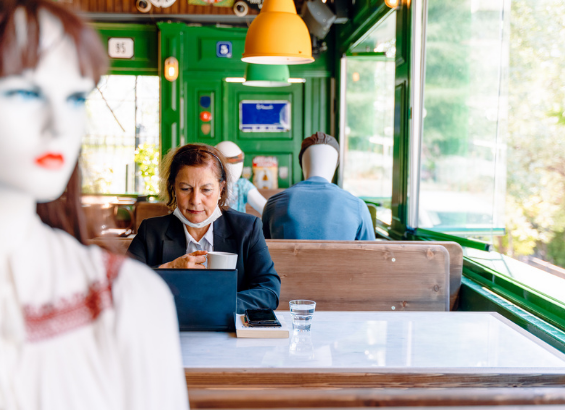
Restaurants around the world were forced to shut down their dining rooms at the onset of the COVID-19 pandemic earlier this year to comply with stay-at-home orders. While many operations closed for good, others reopened at limited capacity several weeks later, sparking creative solutions to enforce social distancing guidelines, including utilizing mannequins. Others were more conservative and opted to place plastic or glass partitions between tables. But which socially-distanced dining room do consumers prefer?
A study published in the International Journal of Hospitality Management revealed that consumer perceptions of the dining room that utilized partitions were significantly greater than those that used mannequins. Scott Taylor, assistant professor at the University of Houston Conrad N. Hilton College of Hotel and Restaurant Management, led the survey of more than 300 people comparing the two servicescapes on the qualities of aesthetics, comfort, safety and cleanliness.
“Results of the current study suggest that consumers have differing perceptions of the cleanliness of the two socially distant servicescapes that were assessed,” Taylor reported. “However, it was not just cleanliness that was found to be perceived significantly differently between the two servicescapes, as respondents indicated that the dining room that has partitions between tables was more visually attractive, cleaner looking, more welcoming, safer looking, more entertaining, more sanitary and more comfortable than the dining room with mannequins.”
Like much of the country, Taylor, a restaurant industry veteran who spent years working in both the kitchen and in management, watched in dismay as thousands of restaurants nationwide closed over the summer. He was intrigued by a restaurant in Virginia making national news for placing mannequins in its dining room. Dressed in old-fashioned attire, the figures were staged to be eating, reading and even proposing on bended knee – all normal scenes for a normal dining room. But 2020 isn’t a normal year.
“This owner had a fun idea but I wasn’t sold that was something I would want to go experience, so I set out to see what consumers in general would prefer,” recalled Taylor of his initial reaction. A quick online search showed even more operations doing the same. “I was surprised at how prevalent it was,” he said. “It was more than I expected.”


When people dine out, Taylor explained, they want to visit establishments that are at least somewhat busy, reinforcing the idea that it must be worth their time and money.
“It’s called social density, so I can understand why restaurants would want to use figures to create that density aspect,” he said. “We’re just not used to seeing mannequins in dining rooms. I think the partitions looked cleaner. You could see why people would be more comfortable with those in between the tables.”
In another noteworthy result, survey respondents over 40 years of age were more likely to go to either establishment, rating both servicescapes as equally comfortable and welcoming. That finding was somewhat surprising to Taylor, considering how older people were reportedly at higher risk of contracting COVID-19, at least in the early stages of the pandemic when the survey was taken. “They would be more willing than younger people to go to either type of operation. They didn’t perceive as much risk,” he said.
As the world continues to deal with the COVID-19 pandemic, social distancing tactics will continue to be important for restaurant operators to ensure guest and staff safety. Taylor is hopeful his findings will provide the industry with data-driven input to make smart decisions.
“The industry already runs on razor thin margins, and it’s even tighter right now. Any cost savings they can find can be the key to survival,” he said. “Don’t buy mannequins, partitions are probably a better, less expensive option.”


Leave a Reply